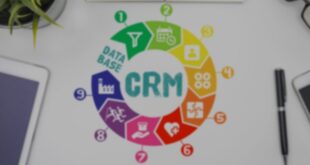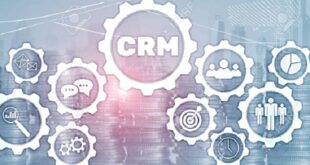The transportation industry is a highly competitive field where businesses must continuously innovate and adapt to remain competitive and profitable. One of the tools that can help transport businesses streamline their operations and improve customer satisfaction is SAP CRM. In this article, we will discuss the advantages and disadvantages of using SAP CRM for transport businesses.
SAP CRM is a software solution designed to help businesses manage customer relationships and optimize sales processes. It provides customer data management, marketing automation, sales automation, and customer service automation functionalities. SAP CRM enables businesses to gain a 360-degree view of their customers, allowing them to deliver personalized customer experiences.
The transportation industry involves the movement of goods and people from one place to another, across varying distances and through different modes of transportation. Transport businesses must manage complex logistics and supply chains while maintaining excellent customer service.
SAP CRM plays an important role in helping transport businesses optimize their operations and improve customer satisfaction. The tool allows businesses to gain a comprehensive view of their customers and manage sales activities, enables customer self-service, and manages service requests.
Read Too:
- Choosing the Best Business Management CRM: A Comprehensive Comparison
- Boosting Small Business Client Retention with the Best CRM Solutions
Advantages of Using SAP CRM for Transport Businesses
1. Improved Customer Experience
SAP CRM enables transport businesses to deliver a personalized customer experience that fosters customer loyalty. The tool allows businesses to understand their customer’s preferences and anticipate their needs, providing a more efficient and personalized service.
2. Streamlined Operations
SAP CRM helps transport businesses streamline their logistics and supply chain operations, reducing costs and increasing efficiency. The tool allows businesses to manage inventory levels and monitor shipments in real-time, ensuring that goods are delivered on time and in good condition.
3. Enhanced Sales Processes
SAP CRM enables transport businesses to manage their sales processes more efficiently, optimizing revenue and profitability. The tool provides sales automation functionalities, allowing businesses to manage their lead generation and qualification, sales forecasting, and commission tracking.
4. Better Reporting and Analytics
SAP CRM provides transport businesses with detailed reporting and analytics capabilities, allowing them to make data-driven decisions and optimize their business processes. The tool offers real-time reporting and analytics, enabling businesses to monitor operational performance and make adjustments as needed.
Read Too: Maximizing Business Potential with Call Center CRM: Advantages and Challenges
Disadvantages of Using SAP CRM for Transport Businesses
1. Complexity
SAP CRM is a complex tool that requires technical expertise to implement and use effectively. It may take some time for businesses to fully understand the tool’s functionalities and how to use them to their advantage.
2. Cost
Implementing SAP CRM can be expensive, especially for small transport businesses with limited budgets. There may also be ongoing maintenance costs associated with using the tool.
3. Integration Challenges
Integrating SAP CRM with other transportation software solutions may be challenging, especially if those solutions are not compatible with the tool. This can result in additional costs and delays in implementation.
Implementing SAP CRM in Your Transport Business: A Step-by-Step Guide
1. Define Your Business Needs
Before implementing SAP CRM, it is essential to define your business needs and identify how the tool can help you achieve your goals.
2. Analyze Your Current Processes and Systems
Analyze your current processes and systems to identify areas for improvement and determine how SAP CRM can help streamline your operations.
3. Develop a Detailed Implementation Plan
Develop a detailed implementation plan that outlines the steps required to implement SAP CRM effectively.
4. Install and Configure SAP CRM
Install and configure SAP CRM according to your implementation plan, ensuring that it is customized to fit your specific business needs.
5. Provide Training and Support
Provide training and support to your employees to ensure that they understand how to use SAP CRM effectively.
6. Monitor and Optimize
Monitor your SAP CRM implementation regularly to identify areas for improvement and optimize your business processes accordingly.
SAP CRM can provide several advantages for transport businesses, including improved customer experience, streamlined operations, enhanced sales processes, and better reporting and analytics capabilities.
However, it is essential to consider the tool’s complexity, cost, and integration challenges before implementing it in your business. By following our step-by-step guide, you can determine whether SAP CRM is right for your transport business and implement it effectively if it is.
 Business Ideas Plan BUSINESSIDEASPLAN.COM
Business Ideas Plan BUSINESSIDEASPLAN.COM







